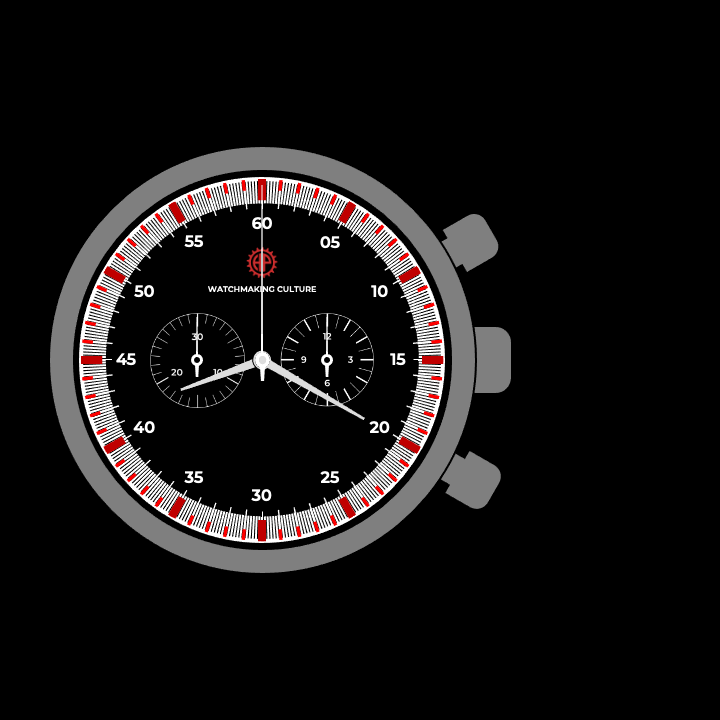DOUBLE-PUSHER CHRONOGRAPH
The double-pusher chronograph is a complex horological mechanism to measure precise time intervals. It is distinguished by the presence of two pushers, which control essential functions such as start, stop, and reset. This is the most common type of chronograph.
Operating Principles
The double-pusher chronograph measures time intervals via two pushers located on the periphery of the watch case. These pushers control the start, stop, and reset functions of the hands that indicate the elapsed time. The typical operation is as follows:
- Start: Pressing the first pusher (usually at 2 o’clock) engages the mechanism, starting the chronograph. This system is coupled with a clutch, ensuring activation without disrupting the main timekeeping function. The elapsed seconds, and often minutes and hours, begin counting. The minute and hour counters are generally displayed on subdials, although in some cases, they may appear centrally, concentric with the chronograph seconds hand.
- Stop: Pressing the same pusher again stops the chronograph at any moment. The chronograph hands freeze, allowing the user to read the precise elapsed time. The chronograph can be restarted without resetting, enabling cumulative timing of multiple intervals.
- Return to zero: After stopping the chronograph, pressing the second pusher (typically at 4 o’clock) resets the mechanism, returning all chronograph hands to zero. It is important never to engage the reset function while the chronograph is running, as this could damage the command lever or other components of the chronograph mechanism.

Although driven by the watch movement, the chronograph operates independently of it. It does not affect the timekeeping accuracy but will cause a slight variation in balance wheel amplitude depending on whether it is engaged or disengaged. In a horizontal clutch system, the amplitude increases when the chronograph is disengaged, whereas in a vertical clutch system, it increases when the chronograph is engaged.
This type of chronograph can be integrated into the movement or designed as an additional module. It may be controlled by a column wheel or a cam system and can feature either a horizontal or vertical clutch mechanism.
